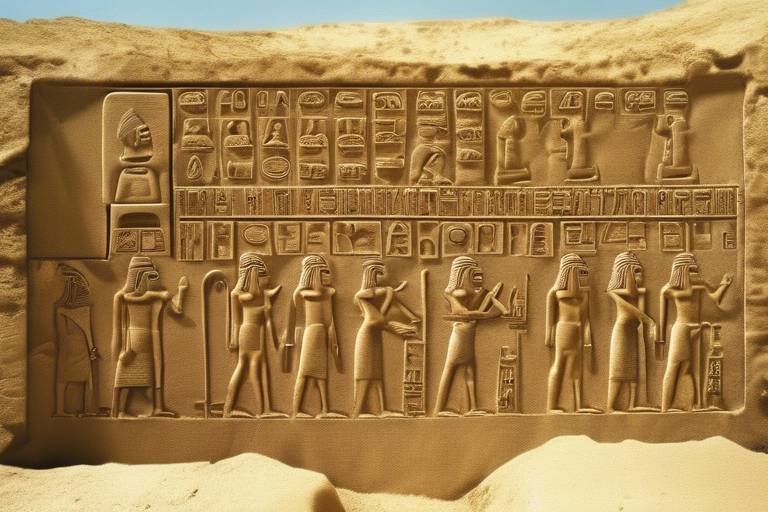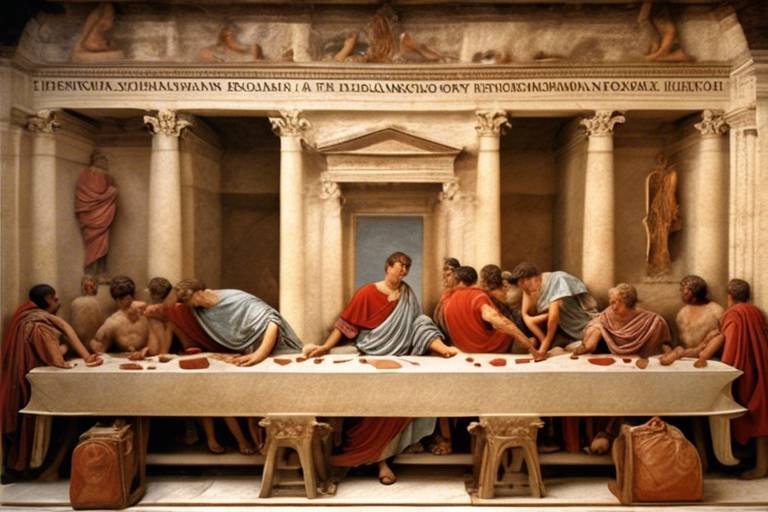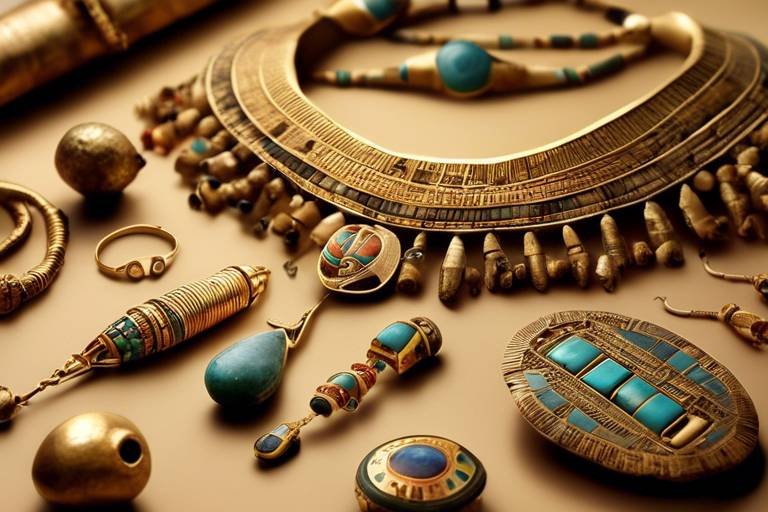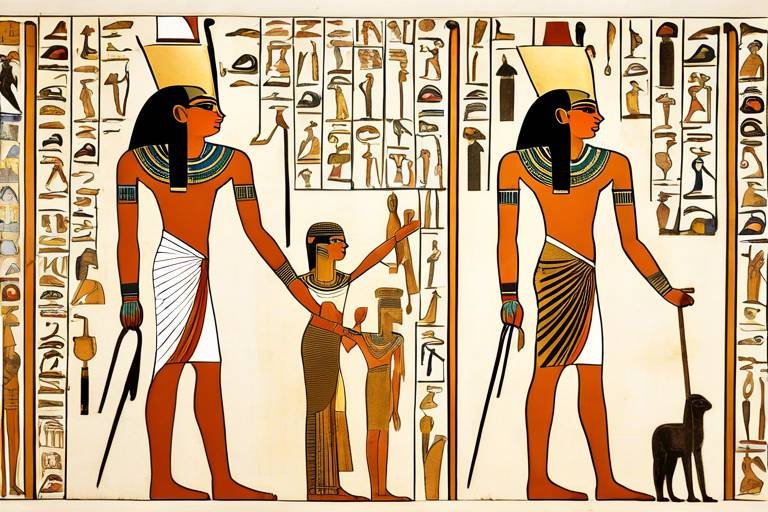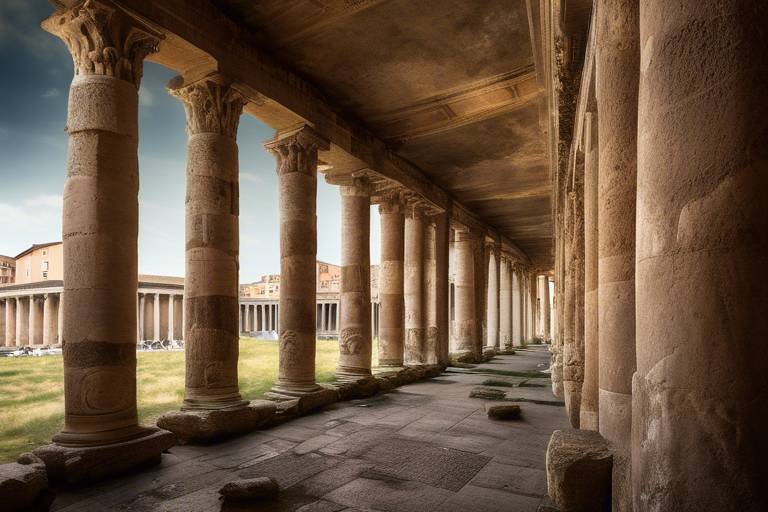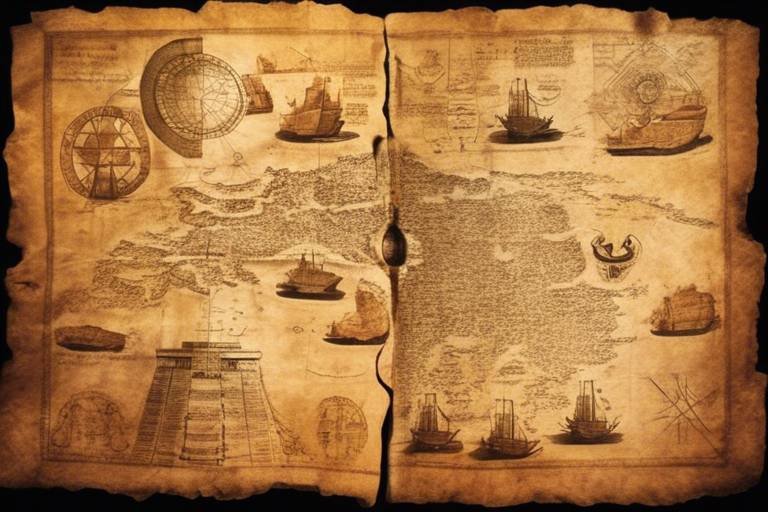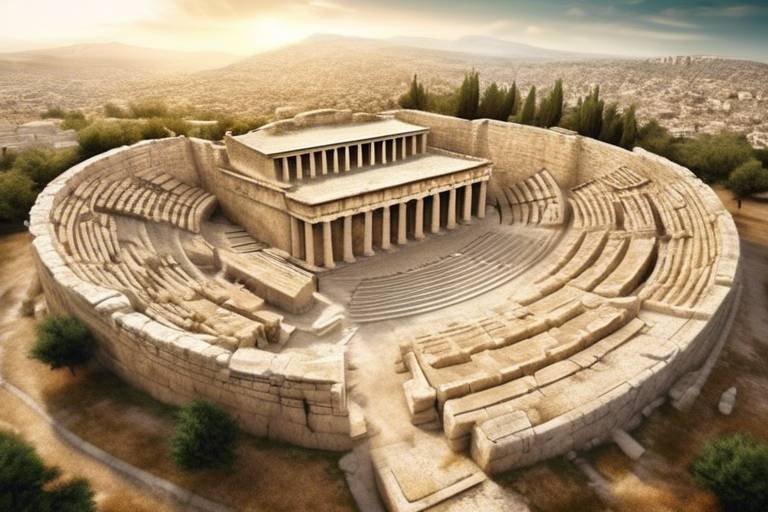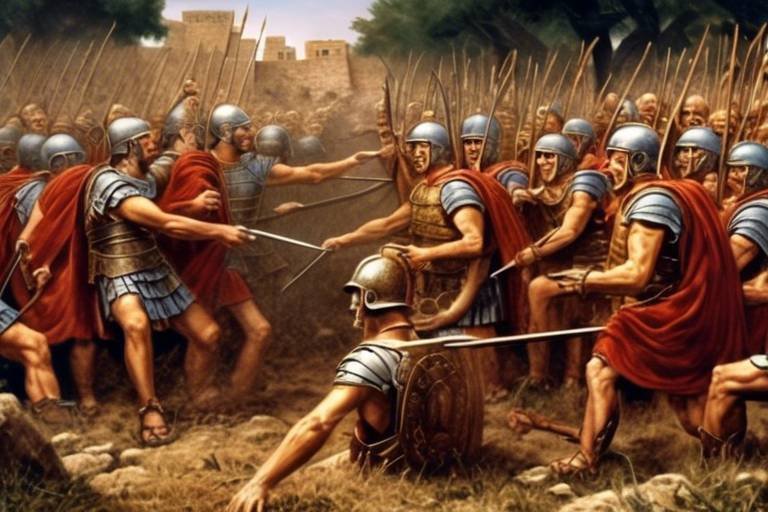The Secrets of the Ancient Indian Civilization
Embark on a journey through time to uncover the enigmatic secrets of the ancient Indian civilization, a realm of unparalleled marvels and mysteries waiting to be unveiled. From advanced technological innovations to profound spiritual beliefs, this ancient civilization has left an indelible mark on history that continues to intrigue and inspire.
At the heart of this exploration lies the Indus Valley Civilization, a cradle of urban sophistication and ingenuity. With meticulously planned cities and intricate trade networks, this ancient civilization stands as one of the oldest urban societies in the world, offering a glimpse into a bygone era of remarkable achievements.
Delve further into the annals of time and discover the Vedic Period, a time of profound spiritual teachings and philosophical insights. The sacred texts of the Vedas and Upanishads served as the cornerstone of Hinduism, laying the foundation for a rich tapestry of beliefs and practices that endure to this day.
Immerse yourself in the captivating realm of Indian epics and mythology, where heroic tales, moral lessons, and divine interventions intertwine to create a vibrant narrative tapestry. The Mahabharata and Ramayana stand as testaments to the enduring legacy of storytelling and wisdom that permeate Indian culture.
Step into the Golden Age of Indian Science and witness the groundbreaking contributions of ancient Indian scientists and mathematicians. From pioneering advancements in astronomy to profound insights in medicine and algebra, these intellectual luminaries paved the way for future generations.
Marvel at the breathtaking architectural wonders of ancient India, from the intricate carvings of Ajanta and Ellora caves to the majestic temples of Khajuraho. Each structure stands as a testament to the artistic prowess and spiritual devotion of the ancient Indian civilization.
Trace the Buddhist legacy as it spread from India to the rest of Asia, leaving an indelible mark on art, culture, and philosophy. The profound teachings of Buddhism continue to resonate across the centuries, shaping the cultural landscape of diverse regions.
Uncover the vast trade routes that crisscrossed ancient India, connecting the subcontinent with distant lands such as Rome and China. These extensive networks facilitated the exchange of goods, ideas, and cultures, fostering a vibrant tapestry of diversity and exchange.
Explore the enduring cultural continuity and influence of the ancient Indian civilization, where traditions, beliefs, and practices continue to shape modern Indian society and culture. The echoes of the past resonate in the present, weaving a rich tapestry of heritage and identity.

Indus Valley Civilization
Exploring the mysteries and wonders of the ancient Indian civilization, including its advanced technology, cultural practices, architectural marvels, and spiritual beliefs.
The Indus Valley Civilization, also known as the Harappan Civilization, flourished around 2600-1900 BCE in what is now modern-day Pakistan and northwest India. This ancient civilization is renowned for its well-planned cities, advanced drainage systems, and intricate craftsmanship. The cities of Mohenjo-Daro and Harappa are prime examples of urban planning excellence, with grid-like streets, public baths, and sophisticated water management systems.
The Indus Valley people were skilled in trade, evidenced by the discovery of seals depicting animals and inscriptions in a script that remains undeciphered. Their economy thrived through trade networks that extended to Mesopotamia, Afghanistan, and Persia, showcasing their commercial prowess.
Archaeological findings reveal a society that valued art, as seen in the intricate pottery, jewelry, and figurines unearthed at various sites. The civilization's decline remains a subject of debate among historians, with theories ranging from environmental factors to invasions.
Delving into the spiritual and philosophical teachings of the Vedic period, where sacred texts like the Vedas and Upanishads laid the foundation for Hinduism.
Exploring the rich tapestry of Indian epics like the Mahabharata and Ramayana, filled with heroic tales, moral lessons, and divine interventions.
Highlighting the significant contributions of ancient Indian scientists and mathematicians in fields such as astronomy, medicine, and algebra.
Examining the architectural wonders of ancient India, from the majestic temples of Khajuraho to the intricate carvings of Ajanta and Ellora caves.
Tracing the spread of Buddhism from India to the rest of Asia and its impact on art, culture, and philosophy.
Discussing the extensive trade networks of ancient India, connecting the subcontinent with regions as far as Rome and China.
Exploring how the traditions, beliefs, and practices of the ancient Indian civilization continue to shape modern Indian society and culture.

Vedic Period
The Vedic Period in ancient Indian history is a time of profound spiritual and philosophical exploration. It is a period that laid the foundation for one of the world's oldest religions, Hinduism. The sacred texts of the Vedas and Upanishads emerged during this era, offering insights into the cosmic order, rituals, and the nature of reality. The Vedic society was structured around the concept of dharma, duty, and righteousness, guiding individuals in their personal and social responsibilities.
During the Vedic Period, society was divided into four varnas or social classes: Brahmins (priests), Kshatriyas (warriors), Vaishyas (traders and farmers), and Shudras (laborers). This social hierarchy was based on occupation and duties, emphasizing the importance of each individual's role in maintaining harmony and balance in the cosmos. The rituals and sacrifices described in the Vedas were central to religious practices and beliefs during this time.
The Vedic Period also saw the development of early philosophical thought, with thinkers pondering questions about the nature of existence, consciousness, and the self. Concepts such as karma (the law of cause and effect) and reincarnation (the cycle of birth and rebirth) began to take shape, shaping the spiritual worldview of ancient Indians. The reverence for nature and the elements, as seen in the worship of various deities representing natural forces, was a prominent feature of Vedic society.
The oral tradition played a crucial role in preserving and transmitting knowledge during the Vedic Period, with hymns, chants, and rituals passed down through generations. The practice of guru-shishya parampara, where knowledge was imparted from teacher to student in a personal and sacred manner, was a hallmark of Vedic education. This period marked a time of intellectual flourishing, as scholars engaged in debates, discussions, and the interpretation of sacred texts.

Epics and Mythology
The ancient Indian civilization is renowned for its rich tapestry of epics and mythology, which have captivated generations with their heroic tales, moral lessons, and divine interventions. One of the most prominent epics is the Mahabharata, an epic narrative of the Kurukshetra War and the fates of the Kaurava and Pandava princes. Filled with complex characters, intricate plots, and philosophical discourses, the Mahabharata delves into themes of dharma (duty), righteousness, and the eternal struggle between good and evil.
Another iconic epic is the Ramayana, which follows the journey of Prince Rama to rescue his wife Sita from the demon king Ravana. Filled with adventure, devotion, and ethical dilemmas, the Ramayana embodies the ideals of loyalty, sacrifice, and the triumph of virtue over vice. Both epics serve as moral guideposts for individuals navigating the complexities of life, offering timeless wisdom and spiritual insights.
Moreover, Indian mythology is replete with a pantheon of gods and goddesses, each embodying different aspects of the divine. From the powerful trinity of Brahma, Vishnu, and Shiva to the fierce goddess Kali and the benevolent Lakshmi, these deities play a central role in shaping the cosmic order and guiding human destiny. The myths and legends surrounding these deities not only entertain but also educate, conveying profound truths about the nature of existence and the interconnectedness of all beings.

Golden Age of Indian Science
The Golden Age of Indian Science marks a significant period in history when ancient Indian scholars made groundbreaking advancements in various scientific fields, laying the foundation for modern scientific knowledge. During this era, Indian scientists excelled in disciplines such as astronomy, mathematics, medicine, and metallurgy, contributing valuable insights that continue to influence the world today.
One of the most notable achievements of the Golden Age of Indian Science was in the field of astronomy. Indian astronomers made remarkable discoveries related to the movement of celestial bodies, the concept of zero, and the calculation of eclipses. Their sophisticated understanding of the cosmos led to the development of complex astronomical instruments and accurate astronomical tables.
Indian mathematicians during this period also made significant contributions to the field of mathematics. The concept of zero, known as 'shunya' in Sanskrit, was introduced by Indian mathematicians, revolutionizing mathematical calculations and paving the way for the development of algebra. The invention of the decimal system and the concept of infinity are among the key mathematical contributions of ancient Indian scholars.
Furthermore, the Golden Age of Indian Science saw remarkable progress in the field of medicine. Ancient Indian physicians developed advanced surgical techniques, herbal remedies, and diagnostic methods that were far ahead of their time. The ancient text, Sushruta Samhita, is considered one of the earliest works on surgery and describes various surgical procedures with remarkable precision.
Metallurgy was another area where Indian scientists excelled during this period. The production of high-quality steel known as Wootz steel in ancient India was a significant technological advancement that was highly sought after in international trade. Indian metallurgists were skilled in crafting intricate metalwork and alloys, showcasing their expertise in working with various metals.
The Golden Age of Indian Science not only advanced knowledge in various scientific disciplines but also fostered a culture of innovation and intellectual exchange. The legacy of ancient Indian scientists continues to inspire researchers and scholars worldwide, highlighting the enduring impact of their contributions to the field of science and technology.

Ancient Indian Architecture
Ancient Indian architecture stands as a testament to the ingenuity and artistic prowess of the civilization that created it. From the intricate carvings of the Ajanta and Ellora caves to the majestic temples of Khajuraho, each structure tells a story of skill and dedication. These architectural wonders not only served practical purposes but also reflected the spiritual and cultural beliefs of the time.
One remarkable feature of ancient Indian architecture is the use of **symbolism** and **geometry**. Every carving, pillar, and layout held deep symbolic meanings, often representing cosmic principles and spiritual concepts. The precise geometric patterns used in construction showcased a deep understanding of mathematical principles and aesthetics.
The temples of Khajuraho, built between 950 and 1050 AD, are renowned for their **erotic sculptures** and intricate designs. These temples were dedicated to various Hindu deities and were designed to be not just places of worship but also visual representations of divine beauty and harmony.
The Ajanta and Ellora caves, dating back to the 2nd century BCE, are a UNESCO World Heritage site known for their **fresco paintings** and rock-cut architecture. These caves served as monasteries and prayer halls, adorned with exquisite paintings depicting scenes from the life of Buddha and various mythological tales.
Ancient Indian architecture also displayed a high level of **engineering** and **structural innovation**. The rock-cut temples of Ellora, for example, were carved out of solid rock cliffs, showcasing the mastery of ancient craftsmen in working with challenging materials.
Moreover, the **architectural principles** developed during this period influenced later architectural styles in India and beyond. The intricate carvings, domes, and spires seen in ancient Indian structures can be traced to the innovative designs of this era.
In conclusion, ancient Indian architecture is a treasure trove of artistic expression, spiritual symbolism, and technical expertise. By studying these architectural marvels, we gain insight into the rich cultural heritage and advanced craftsmanship of the ancient Indian civilization.

Buddhist Legacy
Exploring the mysteries and wonders of the ancient Indian civilization, including its advanced technology, cultural practices, architectural marvels, and spiritual beliefs.
Unveiling the history and discoveries of the Indus Valley Civilization, one of the oldest urban civilizations in the world with sophisticated city planning and trade networks.
Delving into the spiritual and philosophical teachings of the Vedic period, where sacred texts like the Vedas and Upanishads laid the foundation for Hinduism.
Exploring the rich tapestry of Indian epics like the Mahabharata and Ramayana, filled with heroic tales, moral lessons, and divine interventions.
Highlighting the significant contributions of ancient Indian scientists and mathematicians in fields such as astronomy, medicine, and algebra.
Examining the architectural wonders of ancient India, from the majestic temples of Khajuraho to the intricate carvings of Ajanta and Ellora caves.
Tracing the spread of Buddhism from India to the rest of Asia and its impact on art, culture, and philosophy.
Discussing the extensive trade networks of ancient India, connecting the subcontinent with regions as far as Rome and China.
Exploring how the traditions, beliefs, and practices of the ancient Indian civilization continue to shape modern Indian society and culture.
The Buddhist legacy in ancient India is a profound one, shaping not only the spiritual landscape of the region but also influencing art, culture, and philosophy. The teachings of Buddhism spread from India to various parts of Asia, leaving a lasting impact on societies and individuals.

Ancient Indian Trade Routes
Ancient Indian trade routes were crucial in connecting the subcontinent with distant regions, facilitating the exchange of goods, ideas, and cultures. The extensive network of trade routes played a significant role in shaping the economic and cultural landscape of ancient India. One of the most famous trade routes was the Silk Road, which connected India with Central Asia, the Middle East, and Europe, allowing for the trade of silk, spices, and precious stones.
Another important trade route was the Maritime Silk Route, which linked the Indian subcontinent with Southeast Asia, China, and beyond through maritime trade. This route not only facilitated the exchange of goods but also fostered cultural exchanges and the spread of religions such as Buddhism and Hinduism.
Ancient Indian trade routes were not limited to land and sea routes but also included overland trade routes that connected India with regions like Persia, Central Asia, and the Mediterranean. These routes enabled the trade of commodities such as textiles, spices, and precious metals, contributing to the prosperity of ancient Indian cities and kingdoms.
The trade routes of ancient India were not just conduits for commercial transactions but also channels for the exchange of knowledge and ideas. The interactions along these routes led to the transfer of technologies, scientific knowledge, and cultural practices, enriching the civilizations involved and fostering innovation and development.

Cultural Continuity and Influence
The cultural heritage of the ancient Indian civilization continues to wield a profound influence on modern Indian society, shaping traditions, beliefs, and practices that have stood the test of time. From the vibrant festivals that color the streets to the intricate art forms that adorn temples and homes, the legacy of ancient India permeates every aspect of contemporary Indian life.
One of the most striking examples of cultural continuity is the enduring significance of spirituality and religion in Indian society. The philosophical teachings of the Vedic period, with their emphasis on karma, dharma, and moksha, continue to guide moral and ethical behavior, providing a moral compass for individuals navigating the complexities of modern life.
Furthermore, the influence of ancient Indian art and architecture can be seen in the majestic temples, intricate sculptures, and vibrant paintings that adorn the landscape. The architectural marvels of the past, such as the awe-inspiring temples of South India or the intricate carvings of Ellora caves, serve as a testament to the skill and creativity of ancient Indian artisans.
Moreover, the cultural diversity of India, with its myriad languages, cuisines, and traditions, is a direct reflection of the rich tapestry of the ancient Indian civilization. The blending of different cultural influences over the centuries has created a unique and vibrant mosaic that is celebrated and cherished by millions.
Despite the passage of time and the winds of change, the cultural continuity of ancient India endures, providing a sense of rootedness and belonging to successive generations. The echoes of the past resonate in the rituals, customs, and celebrations that define Indian identity, serving as a bridge between the ancient and the modern, the past and the present.
Frequently Asked Questions
- What is the significance of the Indus Valley Civilization?
The Indus Valley Civilization is renowned for its advanced urban planning, sophisticated drainage systems, and intricate trade networks. It represents one of the earliest examples of organized city life in human history.
- What were the main contributions of ancient Indian scientists?
Ancient Indian scientists made groundbreaking discoveries in fields such as astronomy, mathematics, and medicine. Their achievements include the concept of zero, the decimal system, and advancements in surgical techniques.
- How did Buddhism influence ancient Indian culture?
Buddhism played a significant role in shaping art, architecture, and philosophical thought in ancient India. Its emphasis on non-violence, compassion, and mindfulness left a lasting impact on the cultural landscape.
- What are some notable architectural marvels of ancient India?
Ancient India is renowned for its architectural wonders such as the temples of Khajuraho, the rock-cut caves of Ajanta and Ellora, and the grand structures of Hampi. These sites showcase the intricate craftsmanship and spiritual devotion of the time.
- How did the ancient Indian civilization influence modern Indian society?
The ancient Indian civilization laid the foundation for many aspects of modern Indian society, including religious practices, cultural traditions, and philosophical beliefs. Elements of this rich heritage continue to resonate in contemporary India.


